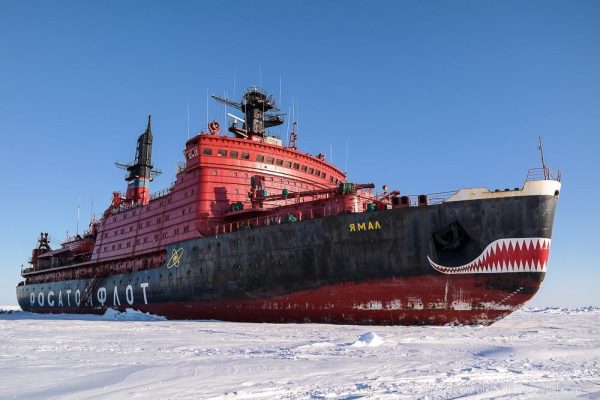
The Northern Sea Route (NSR) is a unique transportation corridor connecting Europe and Asia through the Arctic. In recent years, it has gained increasing attention as an alternative route for international trade, particularly amid climate change and melting ice, which make it more accessible for shipping. In this context, the prospects of investing in NSR-related projects have become a point of interest for companies from various countries, including South Korea and Japan—nations officially listed as unfriendly to Russia among Asian states. Despite political tensions, experts from these countries recognize the potential of the NSR, especially in lesser-explored areas that remain underexamined in open sources. At the same time, there is growing interest from China and India in strengthening their positions in the Russian market by delivering goods via the NSR, potentially weakening the influence of companies from so-called “unfriendly” Asian countries that have exited Russia. The International Arctic Forum, scheduled for March 26-27, 2025, promises to be a key platform for discussing these initiatives, bringing together projects and investors appealing to Asian companies.
South Korea and Japan, as technologically advanced nations with strong shipbuilding industries and extensive logistics expertise, have significant potential to contribute to the NSR’s development. However, political tensions limit their involvement in Russia-related projects. Nevertheless, experts from these countries, despite their governments’ official stances, highlight several underexplored areas that could offer promising investment opportunities. One such area is the development of specialized technologies for operating the NSR in Arctic conditions. For instance, South Korean companies like Hyundai Heavy Industries or Samsung Heavy Industries could focus on designing vessels with enhanced icebreaking capabilities tailored to the NSR’s fluctuating conditions. Unlike traditional icebreakers, these ships could be hybrid, combining high energy efficiency and eco-friendliness, aligning with global trends toward decarbonizing shipping.
Another overlooked area is the development of digital infrastructure for the NSR. Japanese experts from companies such as NEC or Fujitsu emphasize the importance of satellite monitoring systems and artificial intelligence for managing routes and predicting ice conditions. These technologies are not yet fully integrated into NSR operations, creating a niche for investment. Analysts from Tokyo suggest that, despite sanctions, participation in such projects through neutral jurisdictions or international consortia could serve as a compromise, reducing political risks.
A third promising yet underexplored field is the production of modular floating platforms for cargo transshipment along the NSR. South Korean engineers note that such platforms could act as temporary logistics hubs given the limited port infrastructure in northern Russia. This would optimize cargo delivery, reducing reliance on fixed ports that require substantial modernization investments. While these ideas remain conceptual, they represent a potentially profitable direction for investment, especially considering the long-term growth prospects of NSR transit.
While South Korean and Japanese companies face barriers to re-entering the Russian market, China and India are actively expanding their presence, viewing the NSR as a strategic route for goods delivery. Following the departure of many Western and some Asian companies from Russia in 2022, a market vacuum emerged, which these countries are eager to fill. China, already investing in the “Polar Silk Road” initiative, sees the NSR as a way to cut delivery times to Europe and Russia compared to the traditional Suez Canal route. For example, shipping electronics, textiles, and auto parts from China to Russia via the NSR could take 20-25 days instead of 40-45 days via southern routes.
India, meanwhile, is keen on exporting pharmaceuticals, spices, and agricultural goods like rice and tea. The NSR allows India to diversify its logistics routes and bolster economic ties with Russia, particularly as trade between the two nations grows. According to Russian officials, trade volume between Russia and India approached $20 billion in 2024, and leveraging the NSR could help reach the $30 billion target by 2025. Experts note that Indian firms such as Reliance Industries and Sun Pharma are already exploring investment opportunities in NSR logistics projects.
This shift comes at the expense of companies from other Asian countries, including South Korea and Japan, whose brands—Hyundai, Kia, Samsung, and LG—lost significant market share in Russia after their exit. For instance, Hyundai incurred losses estimated at $9 billion after selling its St. Petersburg plant, while Samsung and LG forfeited revenues of $6.9 billion and $2.8 billion, respectively. In contrast, Chinese and Indian companies gain a competitive edge by using the NSR for fast and efficient deliveries, solidifying their foothold in the Russian market.
The International Arctic Forum, set for March 26-27, 2025, offers a unique opportunity to advance these initiatives. This event traditionally gathers business, science, and government representatives from dozens of countries, including Asian states, making it an ideal platform for discussing NSR-related investment projects. In 2025, the forum is likely to focus on sustainable Arctic development, opening prospects for involving Chinese and Indian companies in logistics and infrastructure initiatives.
For South Korean and Japanese firms, the forum could serve as a venue for informal dialogue through intermediaries or international bodies like the Arctic Council, where these countries hold observer status. For example, presenting concepts for modular platforms or digital solutions could attract interest from Russian partners and investors from friendly nations, laying the groundwork for future collaborations. Experts from Seoul and Tokyo stress that engaging in the forum via scientific or environmental initiatives could lower political barriers while maintaining access to promising projects.
The forum provides a stage to showcase the NSR’s advantages over traditional routes. Chinese and Indian companies can present their plans for expanding deliveries and attract investment in joint projects with Russia, such as building terminals or upgrading vessels. The concentration of appealing projects and investors makes this event pivotal for Asian players aiming to establish themselves in the Arctic region.


